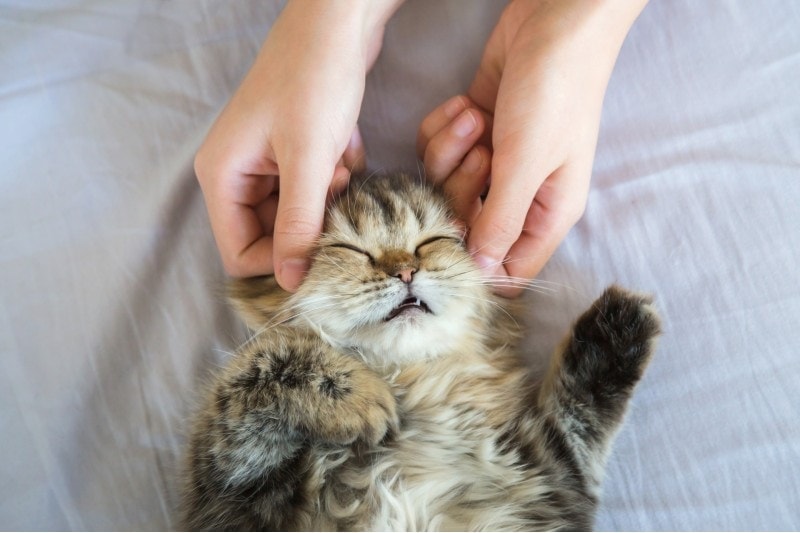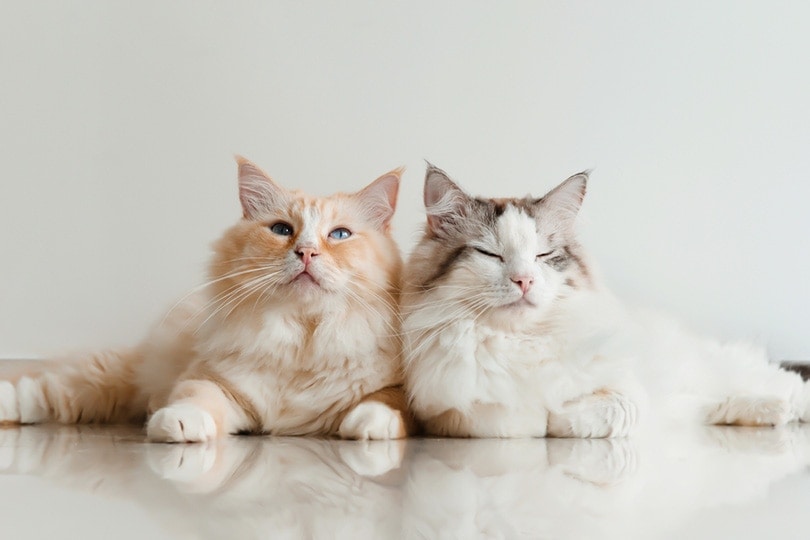Why Does My Cat Swat at My Dog? 6 Likely Reasons
Updated on
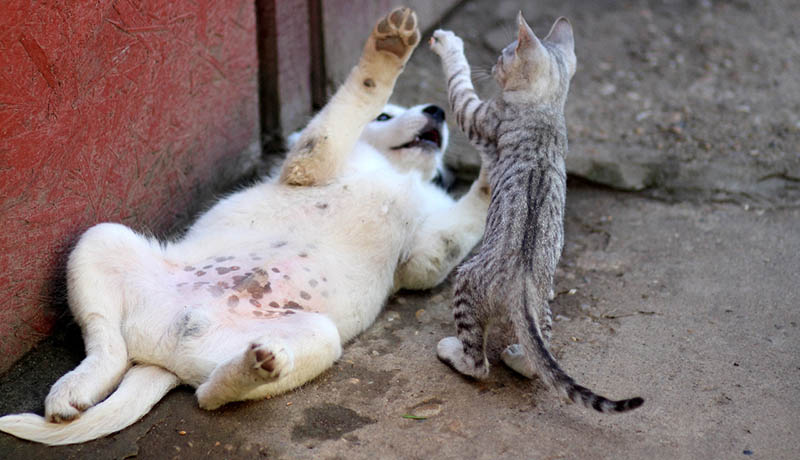
The phrase “fighting like cats and dogs” didn’t just come out of the blue. These two species may be the most popular domesticated animals on the planet but when they share a household, issues can arise. If your cat continuously swats at your dog, there’s generally some sort of reasoning behind it.
Cats typically don’t start swatting unprovoked and it’s up to us as cat owners to determine why exactly our cat feels like lashing out at the dog. Keep reading to learn the reasons why your cat may be swatting at your dog and some tips for keeping the peace in your household.
The Top 6 Reasons Your Cat Might Swat At Your Dog
1. Play
Cats are playful creatures and will sometimes get the dog involved in their antics. Certain cats get along very well with dogs and will have no problem including them in some fun jousting. Typical cat and dog play consists of a variety of hunting behaviors and can be quite comical to watch.
If their bodies are relaxed and their ears are pointed forward as they swat away at your dog, they are more than likely just playing around. Make sure to keep a close eye on this type of play, though, to make sure it doesn’t escalate.
Always watch out for your dog’s behavior and body language to make sure they aren’t agitated by your cat’s playing. Separate them if things begin to get unruly, as many dogs are large enough to harm cats even if they don’t mean to.
2. Dominance
Cats tend to place themselves on a pedestal when it comes to the social hierarchy of the household. They especially like to show the dog and any other pets who is boss. This goes for cats that are brand new to the house and even those that have lived alongside the dog for years. Sometimes, that need to dominate just doesn’t go anywhere.
If you notice your cat swatting your dog for no other apparent reason, this may be the issue. Discourage your cat from behaving this way and keep a close eye on the situation. Use caution when this type of interaction is taking place between two animals that are not yet familiar with one another.
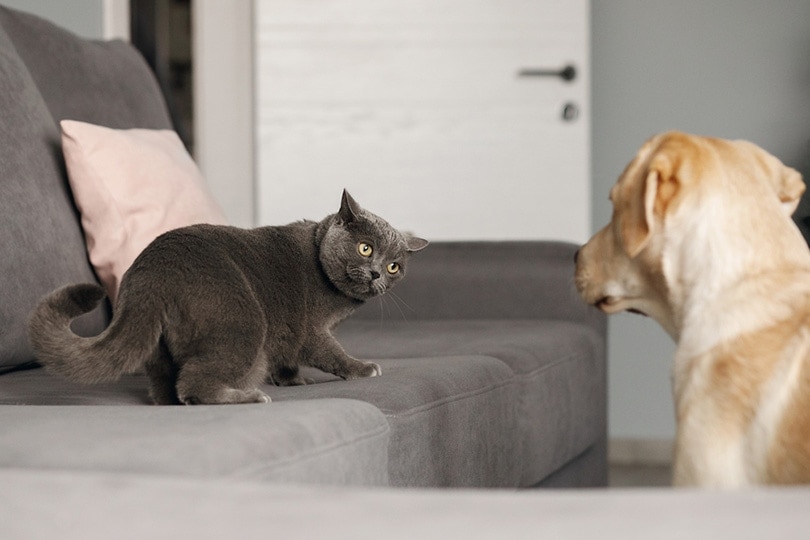
3. Redirected Aggression
Sometimes your cat may see or hear something that puts them in attack mode. Maybe your cat either saw or heard a stray animal outside the home, putting them in defense mode and your dog just so happened to walk by and startle them.
Your cat may even be fearful of loud noises either inside or outside the house, or they could have had an altercation with another pet and your poor, unsuspecting pooch got too close. Sometimes this pent-up aggression can be redirected at the dog just because they were in the wrong place at the wrong time.
4. Territorial Behavior
Whether the cat is new to the home or the dog is new to the home, you may run into some territorial battles as the new household dynamic is established. When this occurs, your cat is trying to establish boundaries by asserting dominance over its territory and showing your pup who is boss.
Your cat could be territorial over food, toys, sleeping areas, or even your affection. If your dog is submissive and doesn’t fight back, it will likely further encourage your kitty to be a bully. The more submissive the dog is, the more likely they are to be a target. If the dog does fight back, this could lead to serious injury, depending on how far they take it. This is why it is important to monitor these interactions to ensure nobody gets hurt.
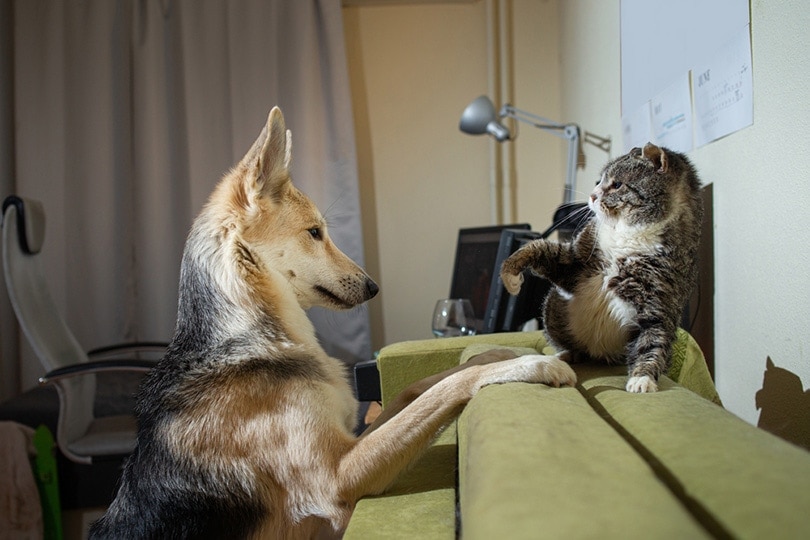
5. Stress of Fear
A cat that is feeling fearful or under stress may react to your dog by swatting at them aggressively to get them away. These negative emotions may or may not be directly related to your dog’s presence. Cats will often react out of fear when they feel cornered or threatened by the dog.
If they do feel trapped, they may crouch, flatten their ears, and wrap their tail tightly around their body. If the dog doesn’t back down, chances are your cat will lash out in self-defense. It’s their way of trying to get out of the situation by using intimidation tactics to free them up for an escape.
Your dog may be antagonizing your cat and they could be acting out in self-defense. That’s why it is very important to keep an eye on these situations to see which animal is the instigator so that you can take steps to mitigate the problem.
6. Medical Issues
When a cat is ill or injured, they may act out in aggression toward other pets and people. This is because they are trying to avoid anything that might worsen their pain, like touch or movement. So, if your dog comes too close to your ailing cat, they may get swatted.
In this case, your cat will need to be evaluated by the veterinarian if it has not been done already. Once you find the source of their discomfort, you can take the proper steps to treat the underlying condition. During your cat’s recovery, it’s best to find them a private, quiet place to relax and recover.
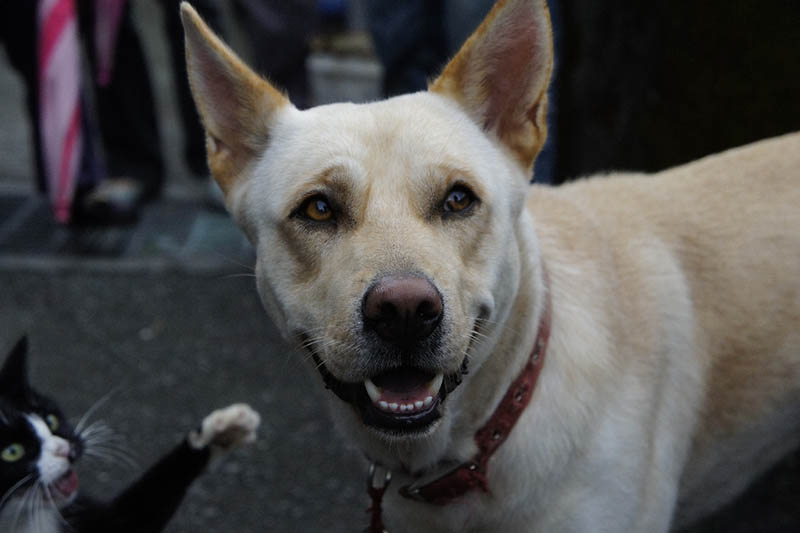
Tips for Keeping the Peace Between Cats and Dogs
Make Proper Introductions
Regardless of which animal was in your home first, you need to make sure proper introductions are made when any new pet enters the household. It is very important to ensure any new dog is cat-friendly. Puppies are generally very easy to socialize with cats when brought home at a very young age, though they will be rambunctious. Be patient, as this process can take some time.
Figure Out the Reason Behind Your Cat’s Behavior
Try to figure out the reason behind your cat’s swatting behavior by observing the interaction and paying close attention to your cat’s body language. It’s generally easy to tell whether it is harmless play or your cat is being aggressive toward the dog. If you think this could be due to an underlying medical issue, get in contact with your veterinarian to have your cat checked out. Otherwise, once you figure out what’s causing this behavior you can take steps to mitigate it.
Feed Everyone at the Same Time but Separately
Feeding time can cause issues between pets because it can create tension and competition over the meal. To ease this kind of issue, feed all the pets in your household at the same time, but in entirely separate locations. This will prevent any food-based aggression and any altercations that could potentially ensue. You also don’t want cats eating dog food and vice versa, as their nutritional requirements are different.
Give the Cats and Dogs Their Own Space
Your pets should be able to have their own space within the home where they can escape from one another. You could have a cat tower that your cat can use to perch and get away from the hustle and bustle of the household.
Cat towers are a great place to keep them up and away from the dog. You could even consider giving them their own designated room that the dog has no access to so they can have privacy when needed.
For the most part, dogs won’t require nearly as much privacy as cats. You can always keep their crate available as a comfortable getaway or even provide them with a cozy dog bed they can use to curl up on.
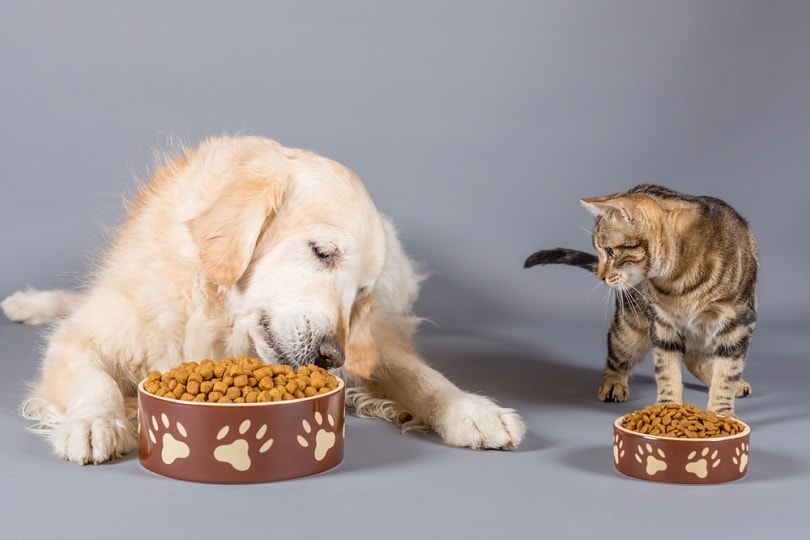
Set Aside Time for Each Animal
When you have multiple pets in the home that are social and require attention, you need to make sure you set aside time for each animal. This is important for their mental health and allows them to get in some personal time for bonding.
If certain animals in the household are neglected for attention, they could resort to acts of aggression as the result of jealousy or competition for your affection. You can even try to get on a schedule by setting aside time for snuggling or grooming each of your pets.
Monitor Interactions
It is very important to monitor any interactions between the cat and dog that are either deemed aggressive or could easily escalate. Cats will go to great lengths to assert their dominance over the household dogs, and this could result in injury or death, as cats are much more fragile when up against a dog, especially larger dogs.
Early socialization and training for dogs from a young age are very important. They will learn how to navigate the individual cat(s) they share their home with and this can lead to a more harmonious household. If you ever notice your dog becoming intolerant of your cat, take steps to ease the tension before it gets out of control.
Conclusion
There could be several reasons why your cat keeps swatting at your dog and it’s up to you to determine what’s causing this behavior. You can easily figure this out by paying attention to what is going on during this kind of interaction. Your cat could simply be playing, or they could be fearful, domineering, or even in pain.
Keep a close eye on your cat’s body language and once you find out the reason, do what you can to make these interactions more peaceful. If your cat begins behaving abnormally or shows any signs of illness, reach out to your veterinarian to rule out any underlying causes.
Feature Image Credit: JumpStory


